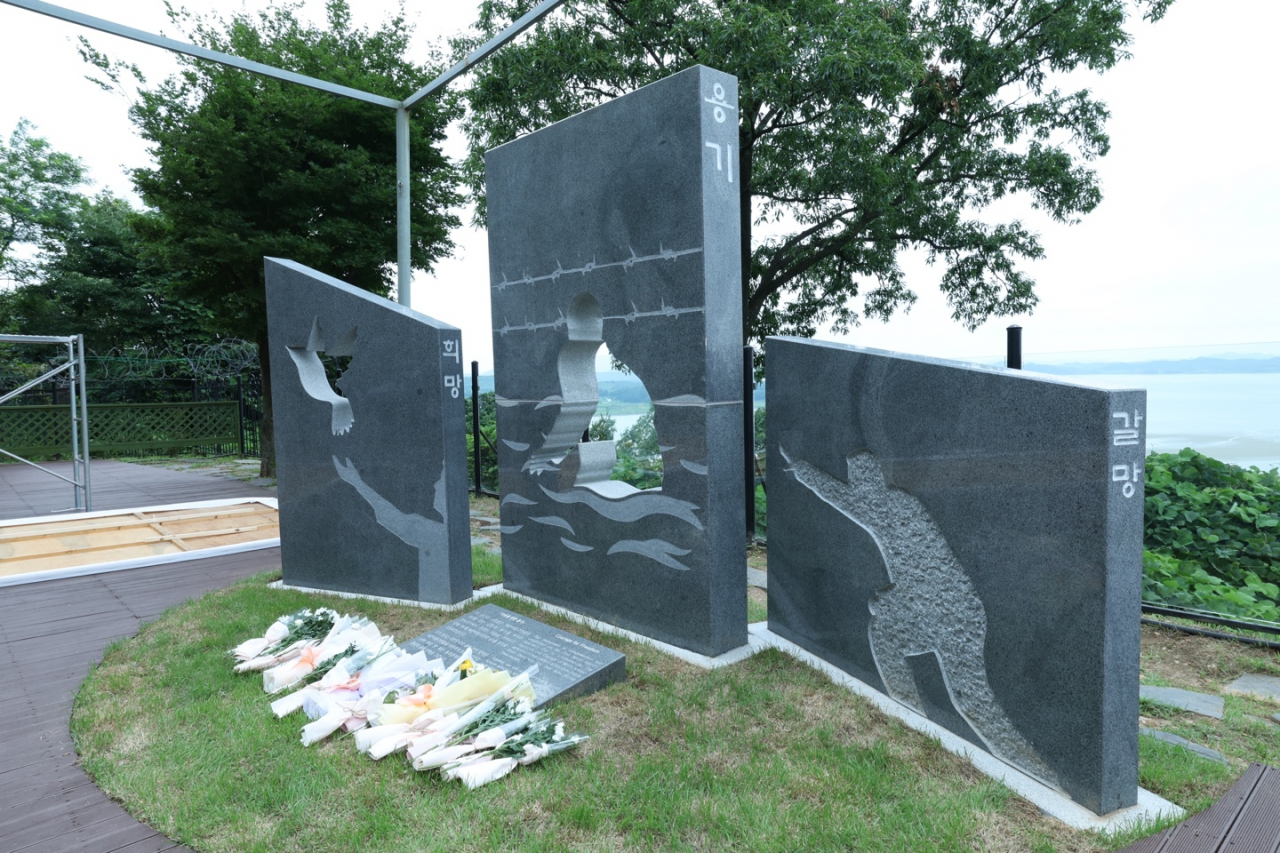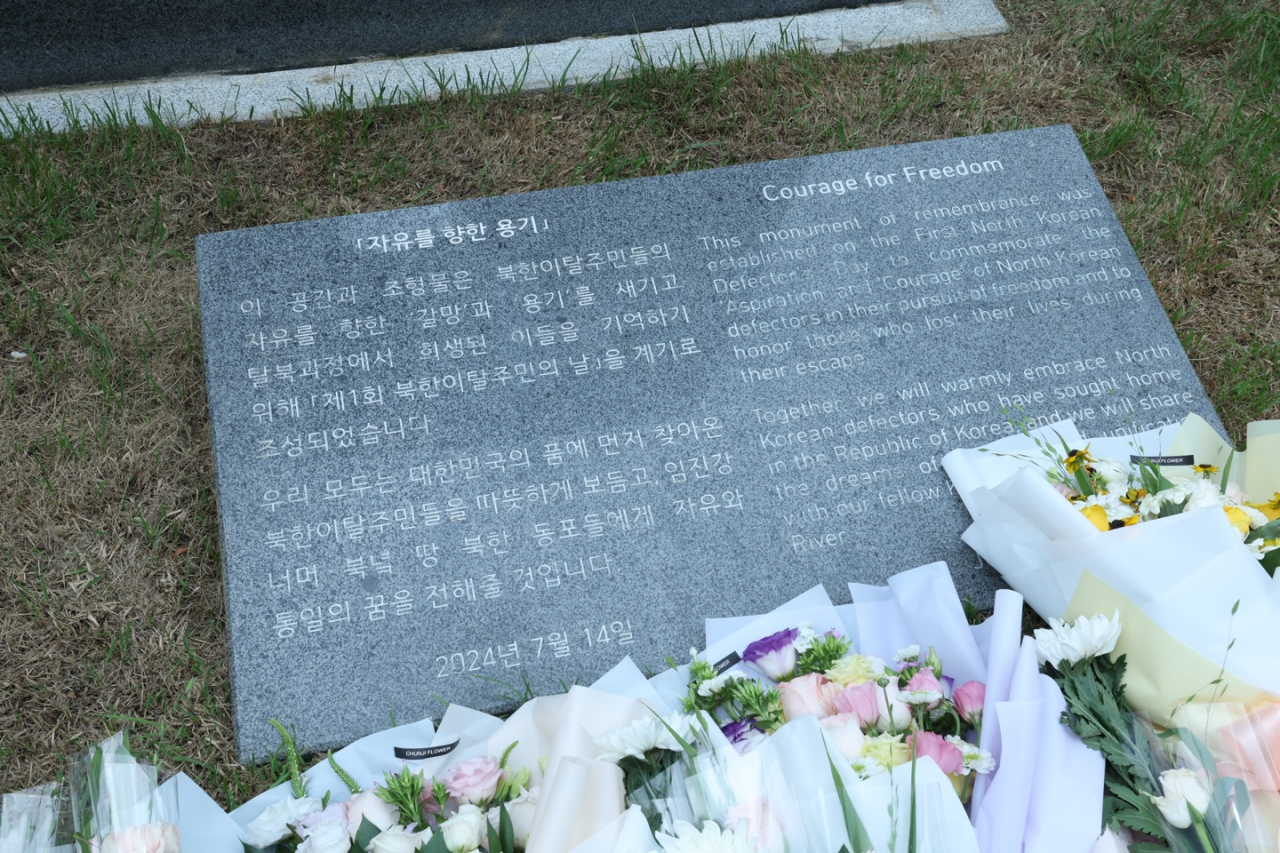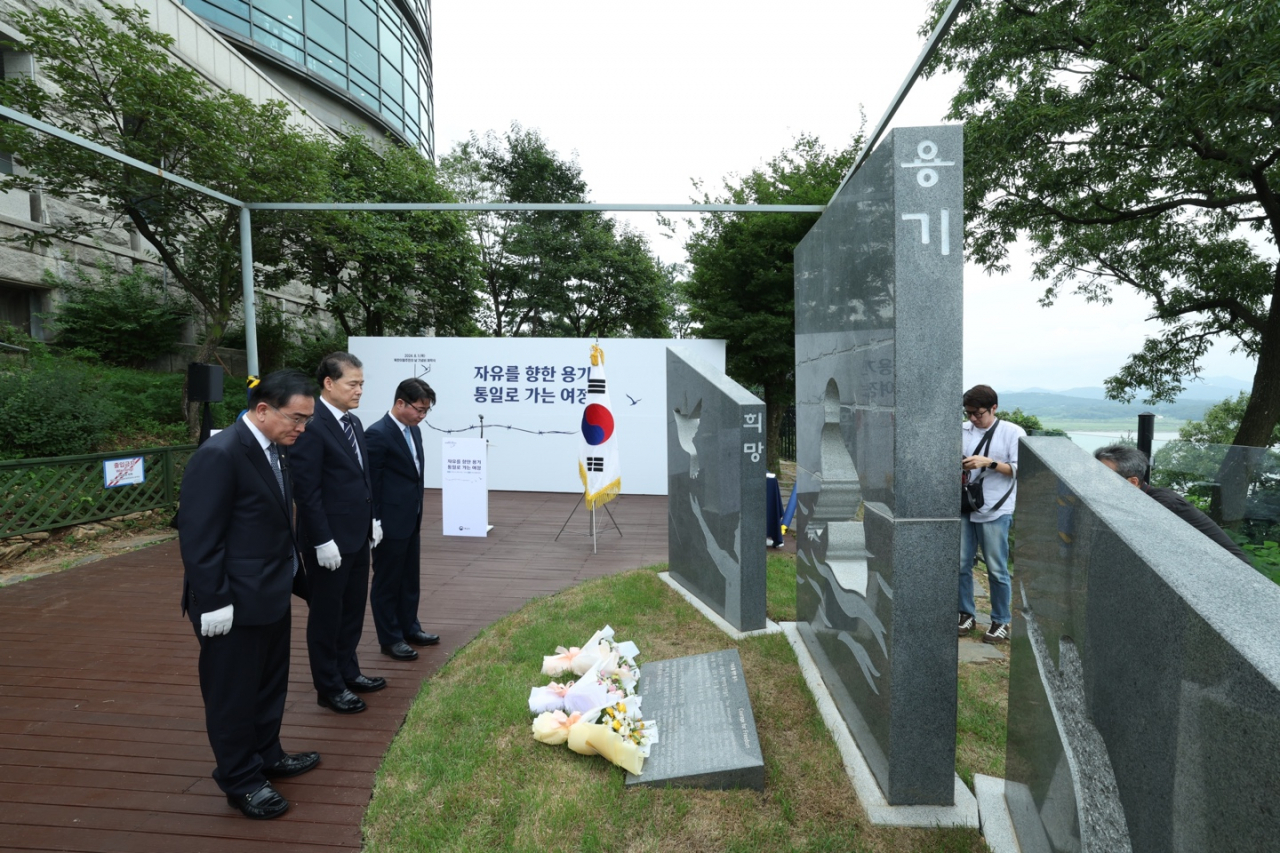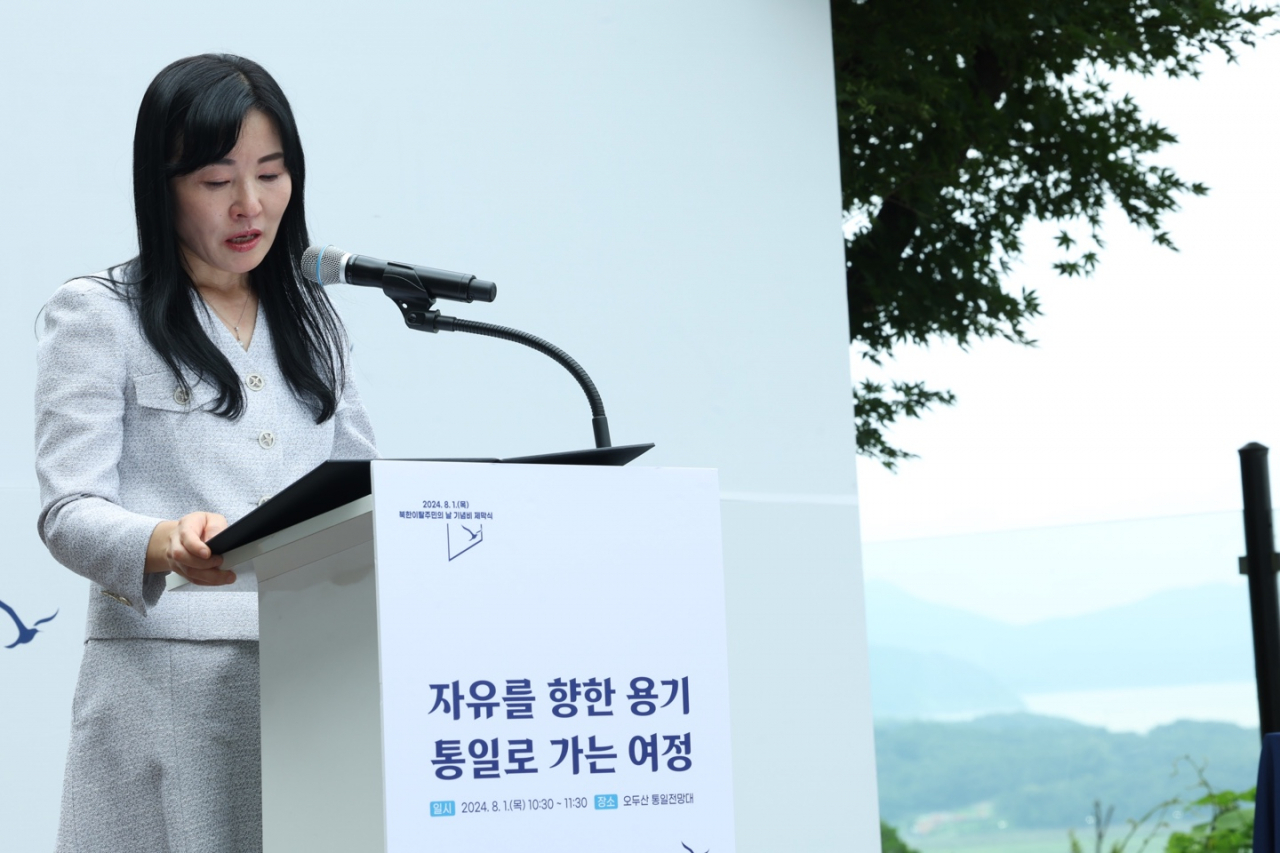 |
A monument titled "Courage for Freedom" was unveiled at the Odusan Unification Tower in the border city of Paju on Thursday. It honors the bravery of North Korean defectors and commemorates North Koreans who perished while attempting to escape. (Ministry of Unification) |
PAJU, Gyeonggi Province -- A monument titled "Courage for Freedom" was unveiled on Thursday in the border city of Paju, offering South Korean visitors a vantage point overlooking North Korean territory. The monument honors the bravery of North Korean defectors who undertook perilous journeys in pursuit of freedom and poignantly commemorates the countless North Koreans who tragically perished while attempting to escape.
This monument -- the first dedicated to North Korean defectors and North Koreans who died escaping -- has been set up at Odusan Unification Tower, which provides a direct view of a North Korean guard post, Kim Il-sung Memorial Hall, a public cultural center, Lim Han Elementary School and even the city of Kaesong.
The monument was erected in conjunction with the first North Korean Defectors' Day on July 14. President Yoon Suk Yeol directed in January that this day be officially designated to protect North Korean defectors as South Korean citizens and encourage a more welcoming and supportive embrace of them in South Korea.
"The sculpture installed here at the Odusan Unification Tower symbolizes the longing and courage of North Korean defectors in their pursuit of freedom, as well as hope for the future, while also commemorating those who sacrificed their lives during the escape process," Unification Minister Kim Yung-ho stated in his commemorative remarks.
"It is also a unified message conveying our sincere and heartfelt wishes for our compatriots in North Korea, visible beyond the Imjin River, to join us in opening the path to a free and prosperous future through unification," Kim said.
 |
The memorial stone is placed in front of the "Courage for Freedom" monument. (Ministry of Unification) |
The monument consists of three pieces: the piece on the far right, titled "Longing," depicts a person reaching out with outstretched arms in search of freedom. The centerpiece, named "Courage," portrays a person crossing a river beyond barbed wire to defect. The left piece, titled "Hope," symbolizes freedom by showing a person releasing a bird into flight.
"It has been nearly 30 years since North Korean defectors began arriving in large numbers in South Korea. However, until now, no government had properly acknowledged, appreciated or honored the sacrifices and courage of defectors," said Tae Yong-ho, secretary general of the Peaceful Unification Advisory Council and the first defector to hold a vice-ministerial position, during the opening ceremony.
 |
Unification Minister Kim Yung-ho (center), alongside Tae Yong-ho, Secretary General of the Peaceful Unification Advisory Council (left), and Ji Seong-ho, a North Korean defector, human rights activist, and former South Korean lawmaker for the People Power Party, pay tribute to the monument on Thursday. (Ministry of Unification) |
Ji Seong-ho, a North Korean defector, human rights activist and former South Korean lawmaker for the People Power Party, urged South Korean society to "acknowledge the bravery of those who have escaped and to refer to North Korean defectors as 'survivors of the North Korean regime.'"
"North Korea is just next door; it’s only a few minutes away by car," Ji said during the opening ceremony. "Yet, North Korean defectors must traverse a journey spanning over 10,000 kilometers to reach safety here. Many have tragically lost their lives along the way -- some perished in the Mongolian desert, others in remote forests of Southeast Asia, and some drowned in the Mekong River."
The Unification Ministry announced plans to distribute commemorative items inspired by the monument to both domestic and international audiences. This initiative aims to amplify the monument's message and the significance of North Korean Defectors’ Day, fostering greater awareness and recognition worldwide.
 |
North Korean defector Han Bong-hee read a heartfelt letter to her parents, who passed away in North Korea, asking them to meet her at the monument, during the opening ceremony on Thursday. (Ministry of Unification) |
Han Bong-hee, a North Korean defector and traditional Korean medicine doctor, tearfully read a letter at the monument, asking his parents who passed away in North Korea to meet her here.
Han’s father, Han Won-chae, made three attempts to defect from North Korea but was ultimately recaptured, tortured and lost his life there. During his time in China, he managed to deliver a memoir detailing his harrowing experiences in North Korean prisons. This memoir has since been published in Korean, English and Japanese.
"Father, Mother, let's make this place our meeting spot and come together in front of the monument often. Please listen to the stories I haven’t been able to share with you. I will visit during holidays, for happy occasions and whenever I miss you," Han said, shedding tears.
"I wanted to share my accomplishments and joys with you, but there was never a place for it. Now that this place exists, I'll come here often," said Han.







![[Herald Interview] How Gopizza got big in India](http://res.heraldm.com/phpwas/restmb_idxmake.php?idx=644&simg=/content/image/2024/11/20/20241120050057_0.jpg)